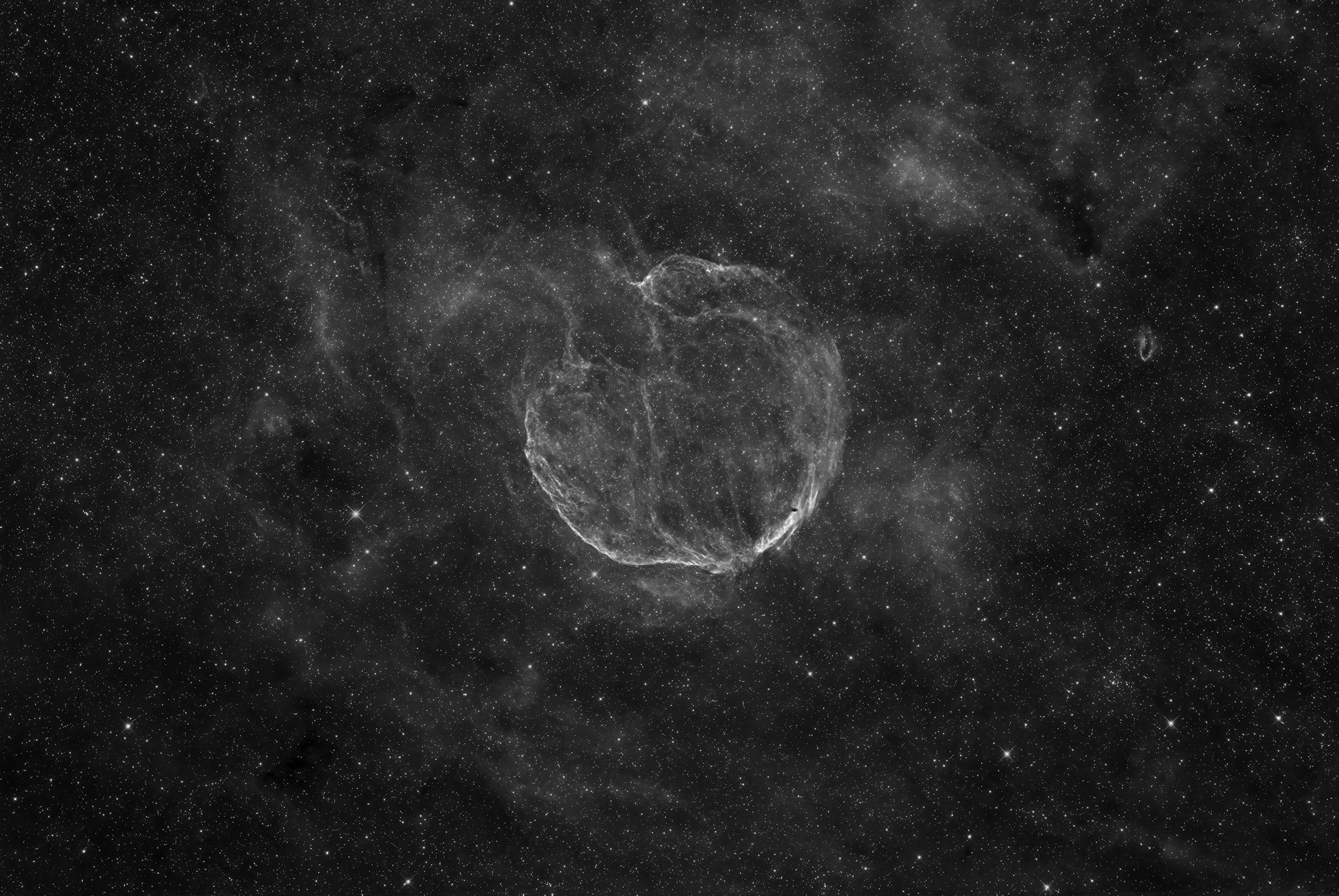
CTB 1 is a supernova remnant. The radio pulsar PSR J0002+6216 has been identified to originate from the same supernova. The pulsar lies at the apex of a narrowly collimated cometary-like 7 arcminutes long tail of nonthermal radio emission, which was identified as a bow-shock pulsar wind nebula. The age of the supernova is estimated to 10.000 years.
In 1955 the American astronomer George Ogden Abell discovered during a survey of the "Palomar Observatory Sky Survey" (POSS) a large arc-like nebula with low surface brightness that he first thought was an old planetary nebula. He listed it in his 1955 publication as number 72.
R. W. Wilson and J. G Bolten of the California Institute of Technology Radio Observatory did a survey of galactic radiation in 1959. They scanned the sky at a frequency of 960 Mc/s with an antenna of 0.8° beam width over a range of 300° in galactic longitude and found 110 discrete radio sources. Some of them could not be identified visually with objects on the POSS plates, so also the entry listed as number 1 (CTB 1, CTB = Caltech Observation List B), which had a diameter of about 1°.
In 1965 the American astronomer Beverly T. Lynds published her catalog of bright nebulae. The nebula is listed there as H-II region LBN 116.81+00.03 (LBN 576).
In Abells second publication of his survey of old planetary nebulae in 1966 he listed the nebula with the number 85 and a diameter of 35 x 35 arcsminutes. He described it as a not symmetrical ring with bright spots or regions. He also noted: "The centre of the extended radio source CTB-1 is 0.4° east of the nebula; it may be a supernova remnant."
In 1968 CTB 1 was then confirmed to be a supernova remnant by A. Poveda and L. Woltjer.
On very long exposure images, the nebula appears as a gas bubble, which resembles a cross section through a human brain with spinal cord extension (medulla oblongata), which is why CTB 1 got the nickname "Medulla Nebula" among amateur astronomers.
 Abell 85/LBN 576/CTB 1 - Medulla Nebula, which this image is part of.
Abell 85/LBN 576/CTB 1 - Medulla Nebula, which this image is part of.
Exposure Data